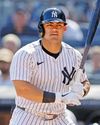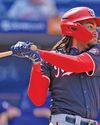
Even if you go to minor league baseball games every year, it's easy to miss the subtle changes that have occurred over the span of a couple of decades.
Some differences aren't very subtle. The arrival of a pitch clock at Triple-A in 2015 was hard to miss. The reduction of the ticket-taking, affiliated minor leagues from 160 to 120 teams was a seismic change.
A lot of other changes are a little less apparent. One year's bleachers become next year's party deck. A "bark in the park" joins the promotional schedule.
Any one of these moves is very minor, but they are the tweaks that over the years that transform the experience for players, teams and fans.
Here's a look at 10 ways the minor leagues have changed and will change over the next few years.
1. MINOR LEAGUE BASEBALL OWNERSHIP IS CONSOLIDATING
The days of the mom and pop-owned minor league team largely disappeared in the 1990s, replaced by the wealthy owner or ownership group. For the owners who survived the threadbare days of the 1970s and '80s, the chance to sell at greatly increased valuations made it a logical time to get out.
Now, we are seeing another transformation. As part of MLB's takeover of the minor leagues, previous rules that prevented a single ownership group from owning more than one team in any league were eliminated.
That opened the doors for consolidation in a manner that had never been possible. Add the desire for some owners to cash out after losing an entire season to the pandemic in 2020, not to mention the concerns that MLB could push for further reductions in the minors in 2031, and the conditions were set for private equity groups to make big inroads into the minor leagues.
This story is from the April 2023 edition of Baseball America.
Start your 7-day Magzter GOLD free trial to access thousands of curated premium stories, and 9,000+ magazines and newspapers.
Already a subscriber ? Sign In
This story is from the April 2023 edition of Baseball America.
Start your 7-day Magzter GOLD free trial to access thousands of curated premium stories, and 9,000+ magazines and newspapers.
Already a subscriber? Sign In

THE SERVICE TIME CONUNDRUM
MLB’s byzantine service time rules cloud rookie status and now PPI eligibility

LUIS TIANT WAS MLB'S MOST SUCCESSFUL CUBAN PITCHER
On a scouting trip to Cuba in 1957, Bobby Avila discovered 16-year-old righthander Luis Tiant on the island's Juvenile League all-star team.

ORGANIZATION REPORT
Outfielder Heston Kjerstad's career has been unique, to say the least.

TOP 10 NL EAST
From the moment Thomas White stepped on a high school mound, he was viewed as the top lefthander available in the 2023 draft.

PREPARATION PAYS OFF
lowa politician J.D. Scholten makes a surprising return to pro ball at age 44

MAKING THE GRADE
Assessing the future value of graduated National League prospects

TOP 10 NL WEST
Even in high school, Bryce Eldridge could hit the ball a mile. The 6-foot-7 righthander could also touch 96 mph off the mound.

Wood Has Towering Upside- Nationals rookie James Wood also stands 6-foot-7 and also has game-changing power.
Aaron Judge and Oneil Cruz are 6-foot7 sluggers who stand out for their power in this year’s MLB Best Tools voting. Wood spent half of this season with Triple-A Rochester before making his MLB debut on July 1. While he was in the International League, he captured managers’ attention. Wood unanimously won Best Power Prospect and also claimed Most Exciting Player in a survey of league skippers. Wood hit .353/.463/.595 with 10 home runs in 52 games for Rochester. His .242 isolated slugging was the best for a player 21 or younger at Triple-A this season.

ROAD BLOCK?
Scholarship expansion puts mid-majors at a major disadvantage on the road to Omaha

ROYALS REVIVAL
A revamped and rejuvenated farm system has Kansas City ready to rebound